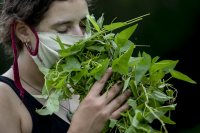
Hathorn Hall, the college’s first building, is home to faculty offices in English, neuroscience, and mathematics, plus several administrative offices and high-ceiling classrooms.
And until last week, it was also the residence of around 50,000 honeybees.
Each summer, workers in the various building trades swarm the campus, taking on projects large and small, so they inevitably discover animal homes, whether squirrels in a Frye Street attic or a thriving honeybee hive in the college’s oldest building.
Discovered by painters working on the 1855 building’s white trim, the hive was within the soffit where the portico roof joins the brickwork of the main building.
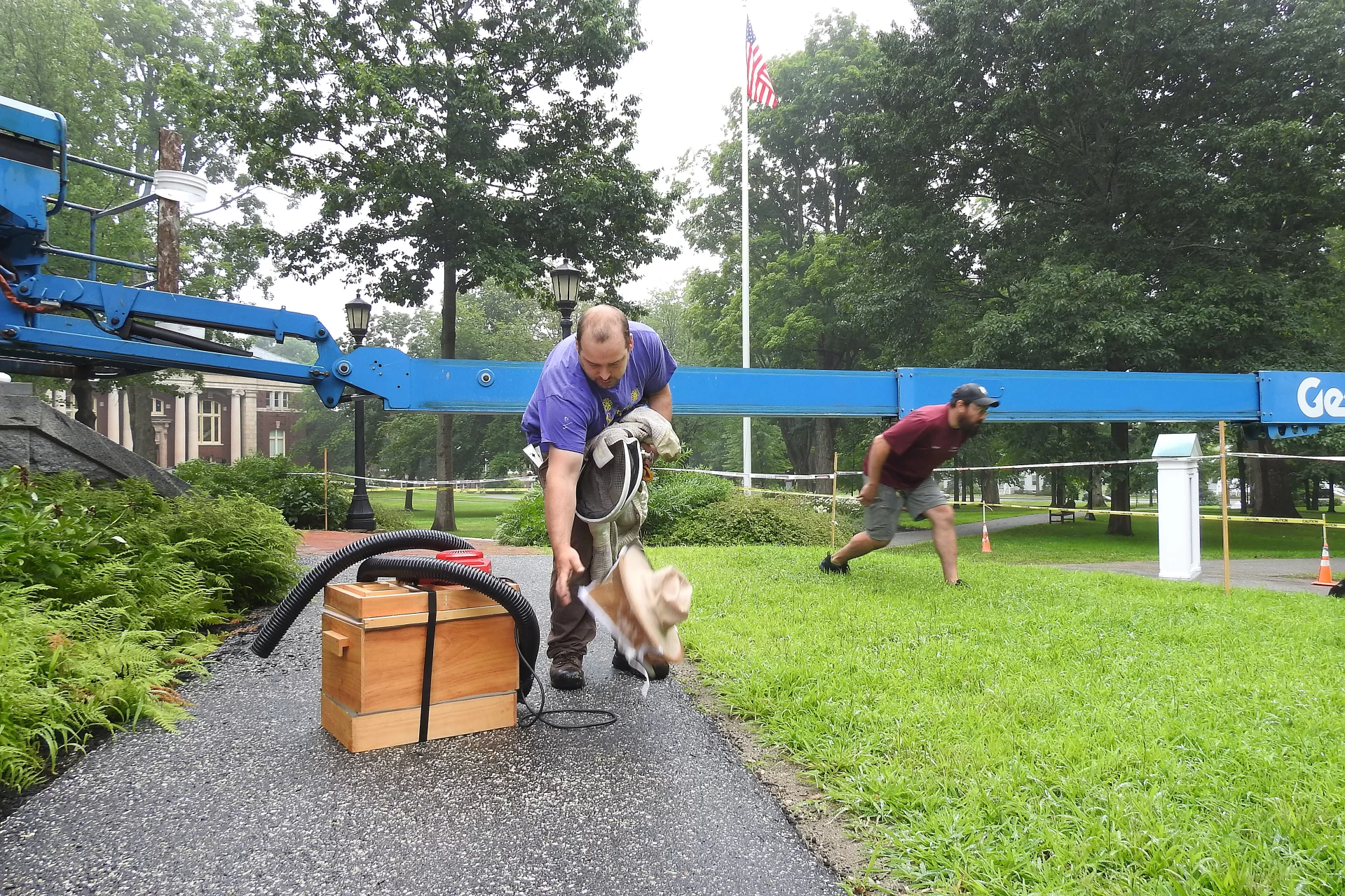
After its discovery (“the hard way,” said a painter who was stung), Facility Services made a call to Brian Mason, owner of Spicer Bees in Whitefield, Maine. He arrived at 8:30 a.m. last Thursday to begin removing the hive.
Joining him was Facility Services carpenter Matt Capone. As the two donned bee suits, Mason opined that the Bates hive was probably new. It was a safe guess, since many hives in the wild die off each year.
With Capone at the controls of a Genie boom lift, the pair ascended two stories to the site of the hive. As more and more bees buzzed around them, Capone used an oscillating multitool and pry bars to remove a section of wood trim. That opened the soffit for Mason, who used a homemade vacuum to suck up the bees and special hive tools to scrape the extensive comb attached to the roof joists.
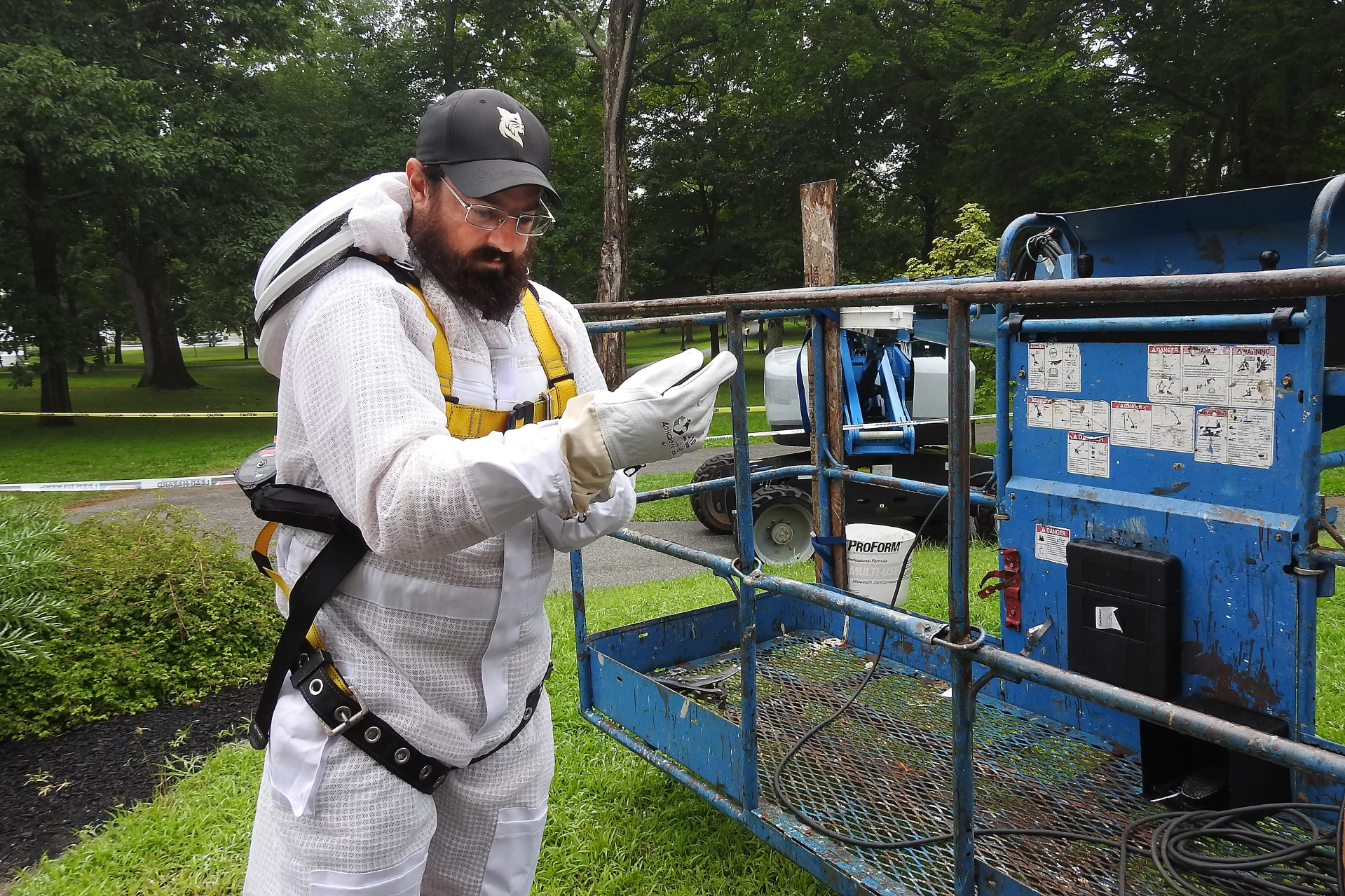
As he worked, Mason tossed pieces of comb onto the floor of the boom basket. Soon, honey was dripping from the basket, some drops tasted by onlookers. Hallelujah, it’s raining honey! Later on, Mason took a big taste from a comb. “Bobcat Blend, local honey,” he said. “Tastes great!”
About 45 minutes into their work, Capone lowered the boom to the ground. The hive was much bigger than Mason had originally thought. Given the amount of comb and its very good condition, he wanted to save what he could. He exited the basket and headed back to his car to retrieve a box for saved pieces of comb, which, in addition to honey, contained the brood — eggs, larvae, and pupae — within the hexagonal cells.
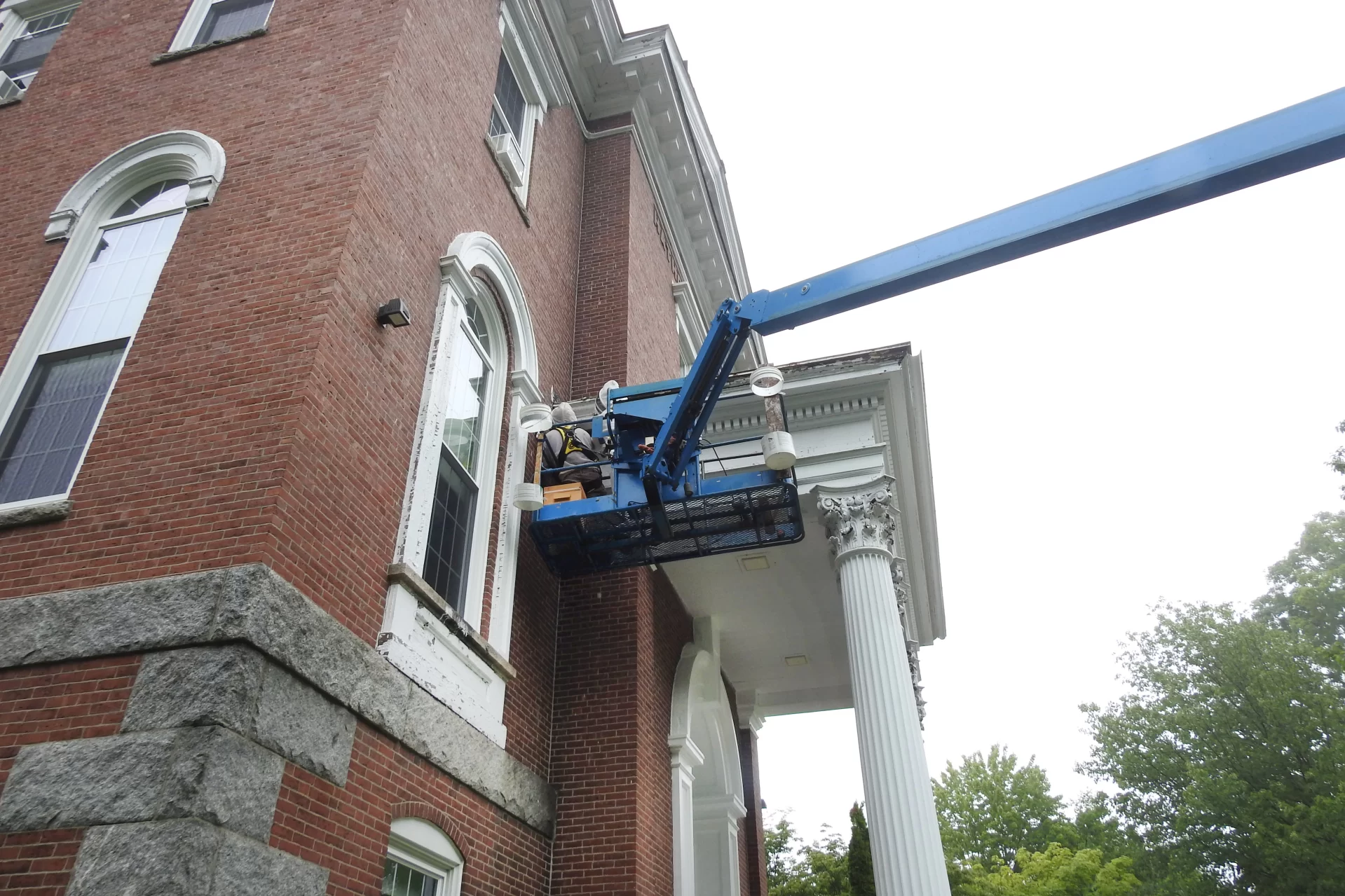
The size of the hive told Mason that the hive was not new, likely having survived at least one Maine winter. Mason also noticed some long-abandoned combs. Because bees prefer to colonize where hives have been before, the hive “also could’ve been active years ago, then abandoned, and then resettled in the last couple of years.”
Wild honeybees aren’t casual about where they create their hives — for them, like humans, it’s all about location, location, location.
“The Bates location checked all the boxes,” Mason said. For example, “in the wild, bees prefer to nest well off the ground, as they did at Bates.” And in northern climates, bees often choose a south-facing location (Hathorn faces southwest) to help with warmth and temperature control, and prefer dry, dark, and deep spaces, which the soffit certainly was.
And the Bates hive had a single entrance, a small slit that had opened up behind a downspout. “A single entrance helps bees regulate the temperature of the hive and helps them defend the hive,” Mason said.
And defend the bees did, dive-bombing Mason and Capone with the gusto of wartime aviators. When Mason returned to the ground to retrieve the box, he showed his glove, which was dotted with tiny yellowish nobules. “Venom sacks from bees trying to sting,” he said.
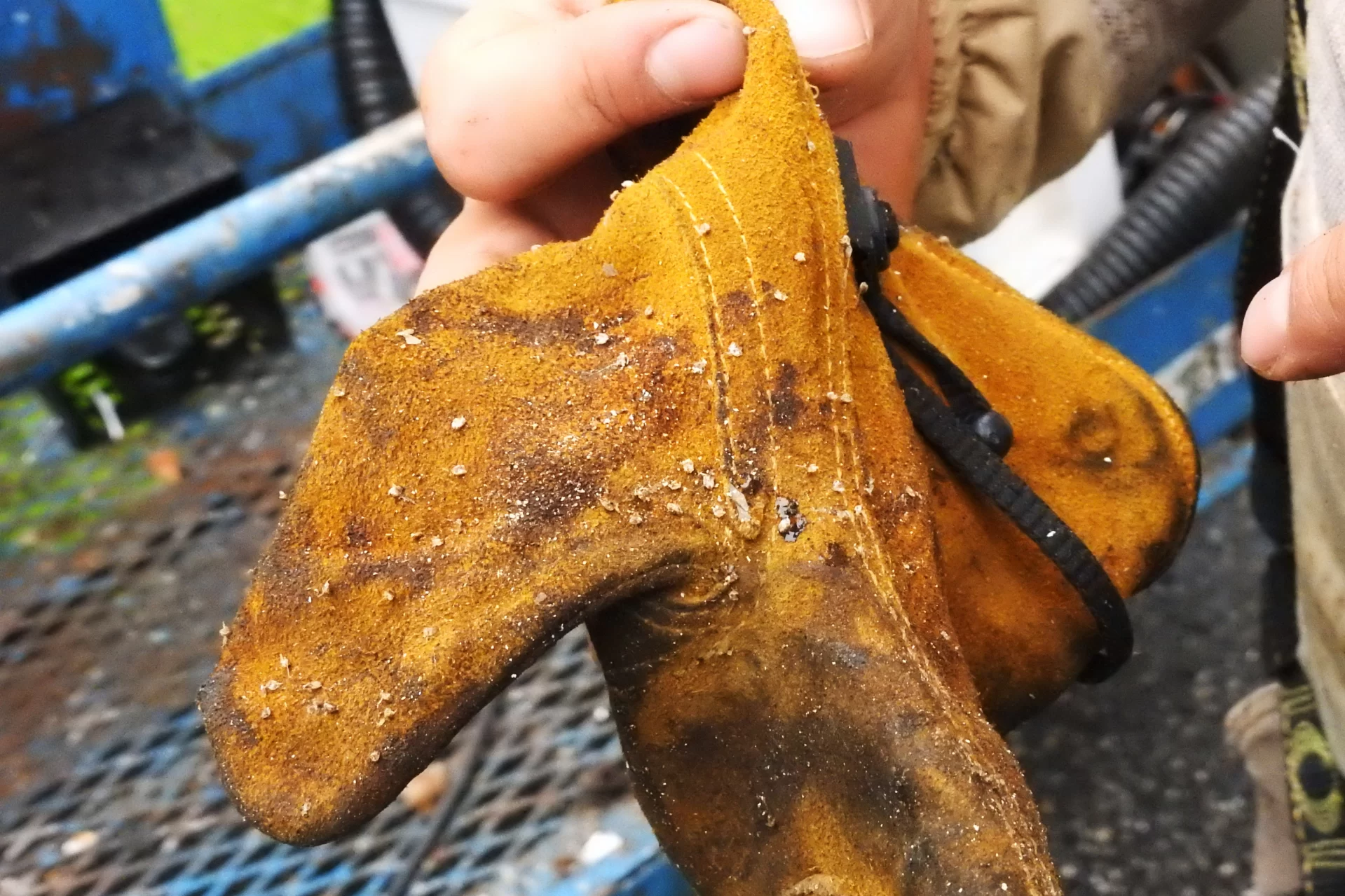
Capone said that compared to milled trim boards available today, the wood trim removed from Hathorn was heavy, thick, and nailed into place with 19th-century square nails. That meant the trim was likely original to the building.
As passers-by became a crowd of onlookers, they buzzed about the fate of the queen. Folks wanted to know if Mason captured the queen in his vacuuming? “We don’t know that,” he said. His homemade bee vacuum uses a regular shop-vac motor that has baffling between the motor and the container that reduces the mortality of bees being sucked in. “But vacuuming is not 100 percent mortality-free, so the queen could’ve been killed,” he said.
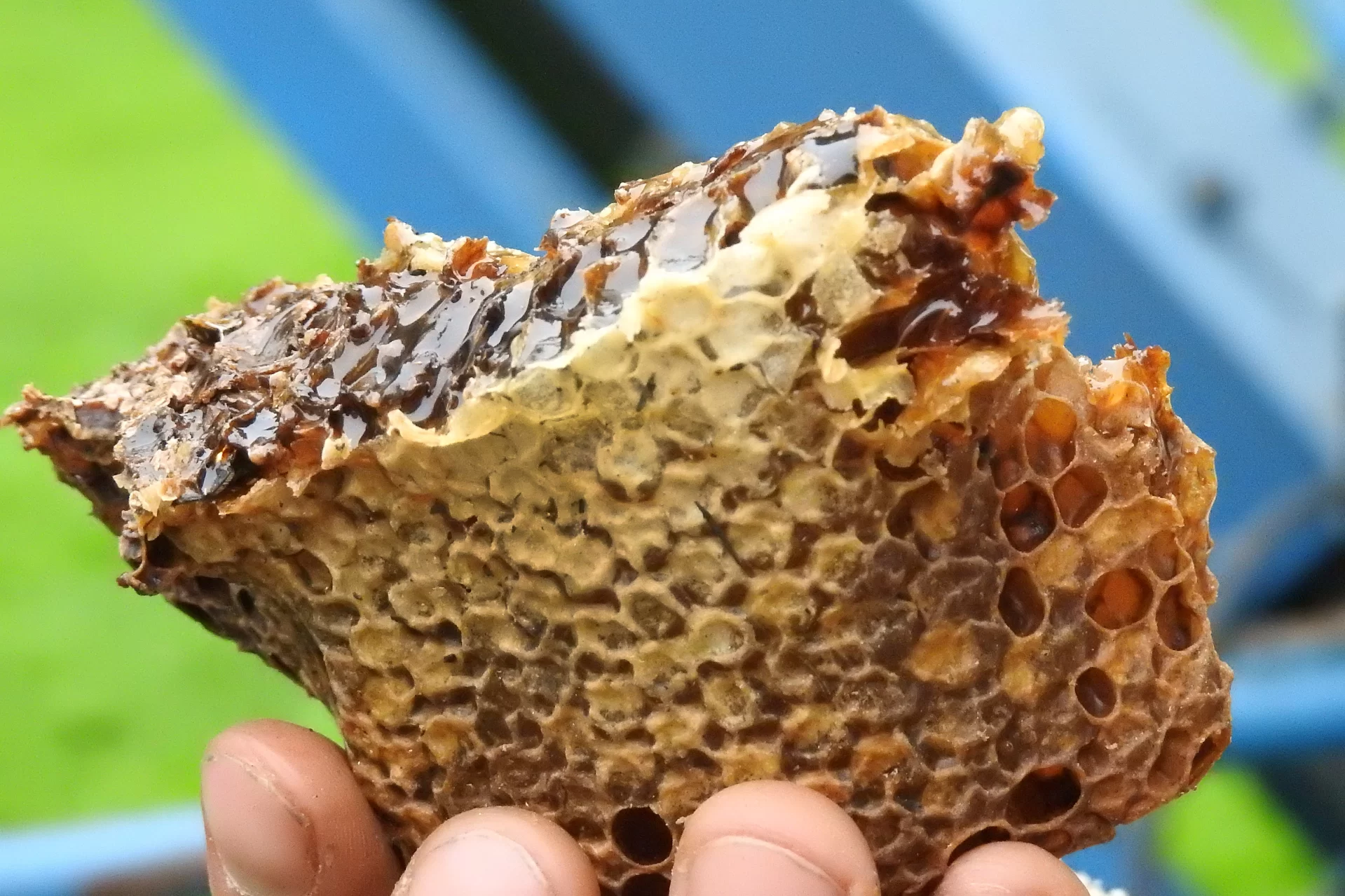
Evidence that the queen was gone came a few days later: The former hive space was quiet, with only a few bees hanging around in desultory fashion, a signal that the nest had indeed lost its leader. It was Monday morning, and Capone had returned to do some reconnaissance before replacing the original trim pieces and caulking the opening where the bees had entered.
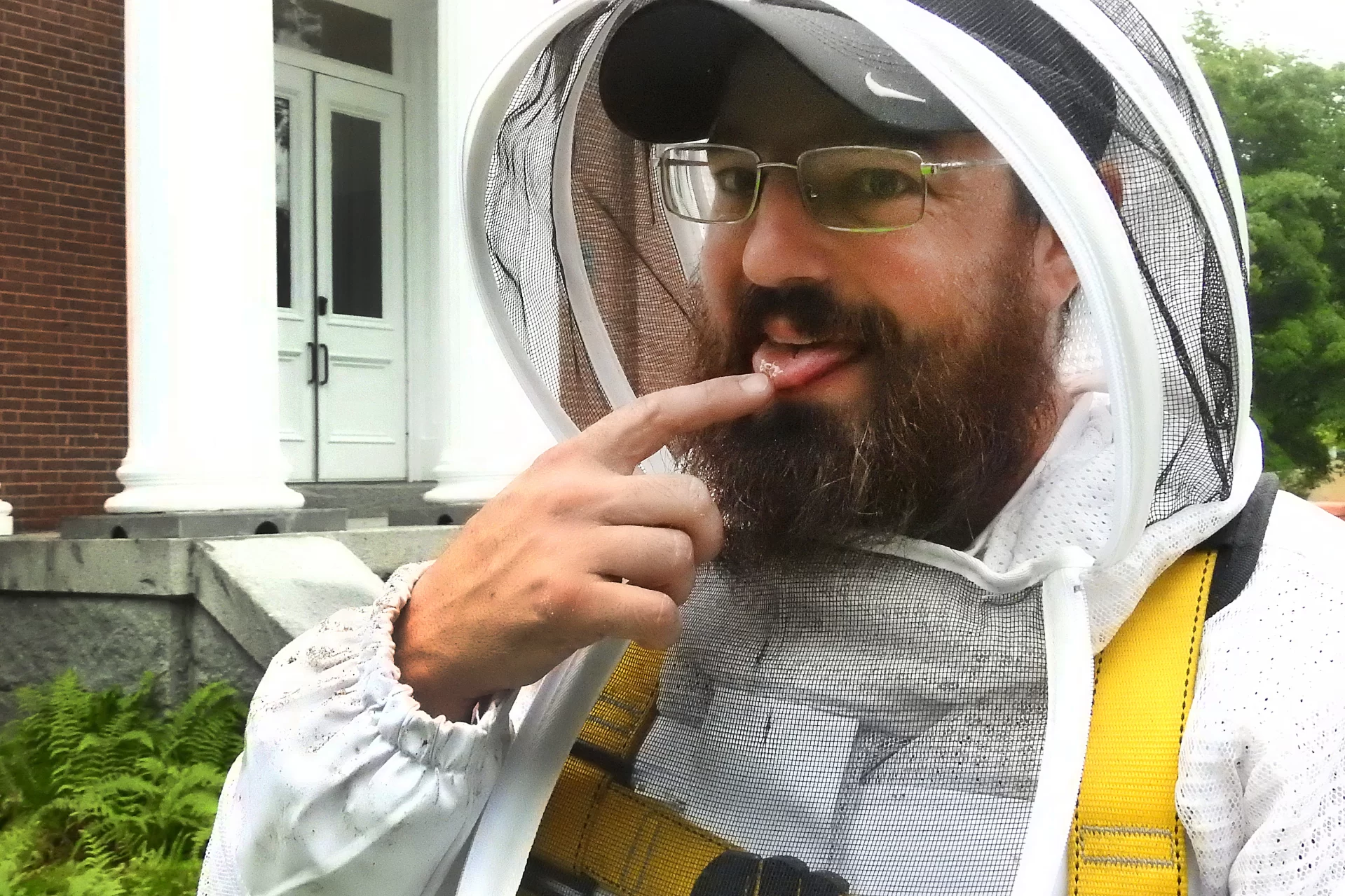
Mason commended Bates for calling in a beekeeper rather than an exterminator. “100 percent credit,” he said.
The fact that the Bates hive was not only healthy but had apparently survived at least one winter, if not more, was important, he said. Many wild honeybee hives die off each winter, and commercially maintained hives typically rely on treatments to control mites that can decimate hives.
“Less human intervention is always valuable,” Mason said. “The fact that this hive wintered without intervention means the bees might just have something going for them to survive. So now I can introduce the Bates bees into my apiary. That’s a win.”
